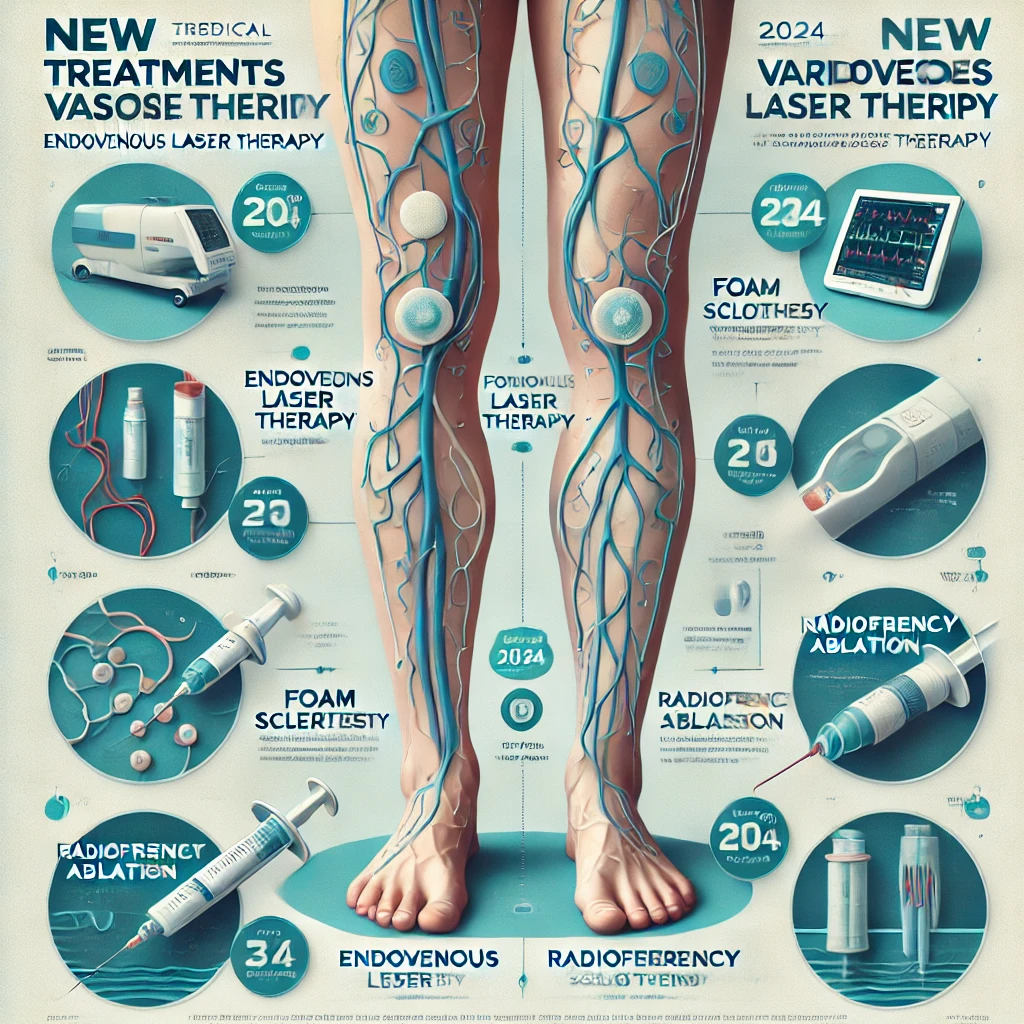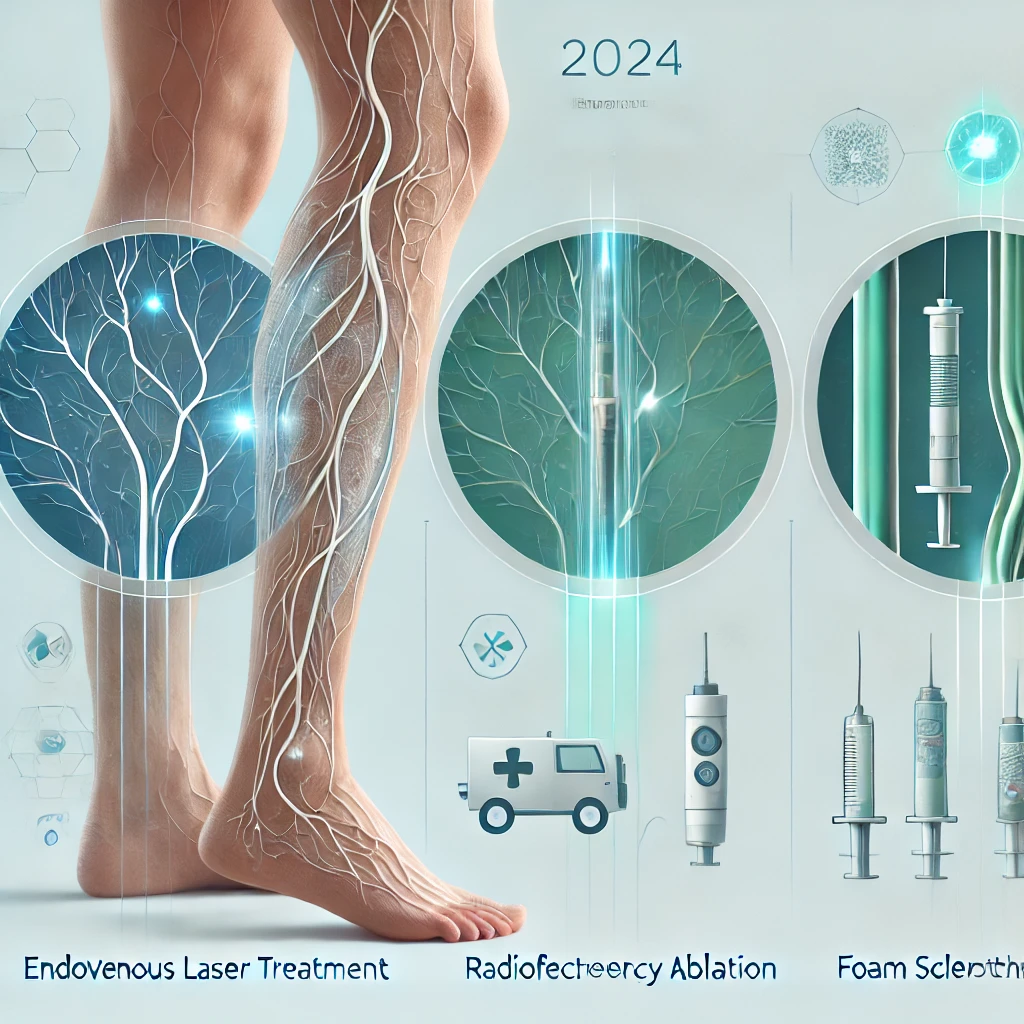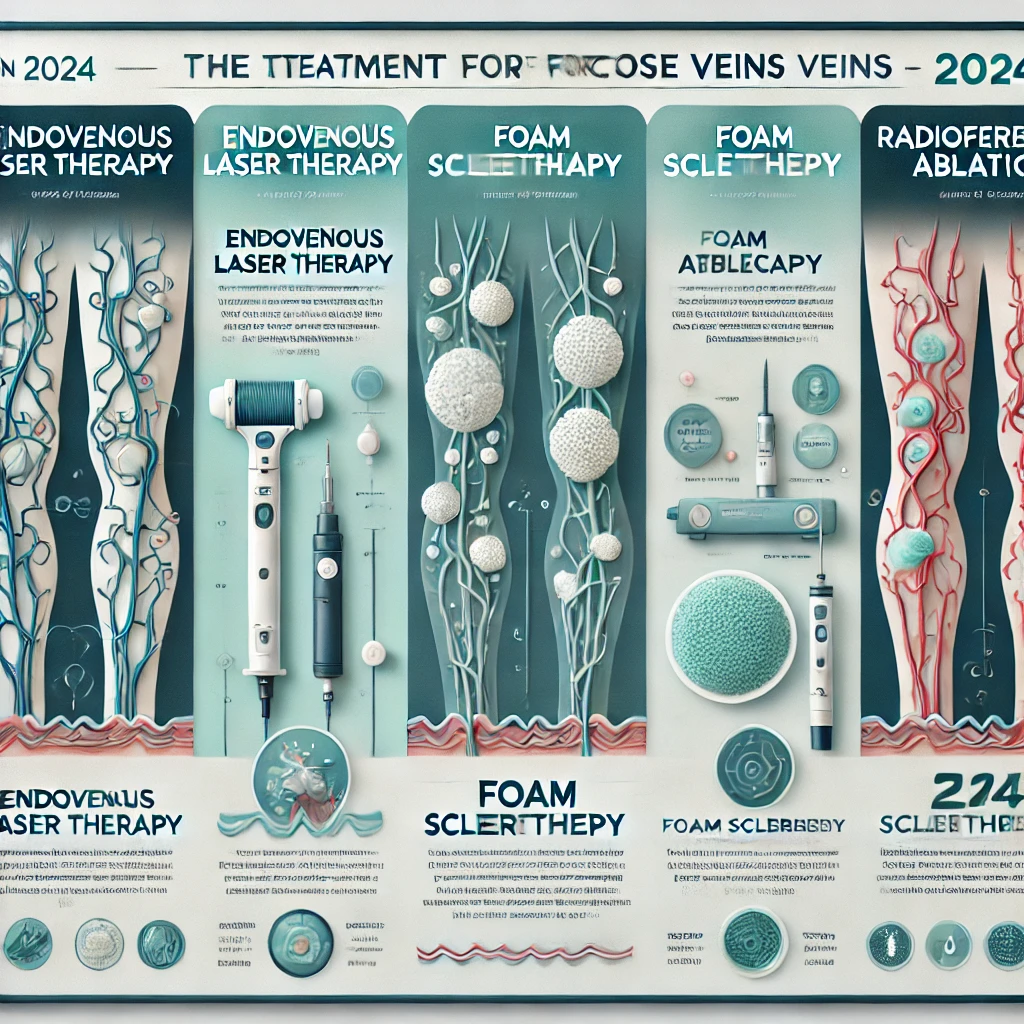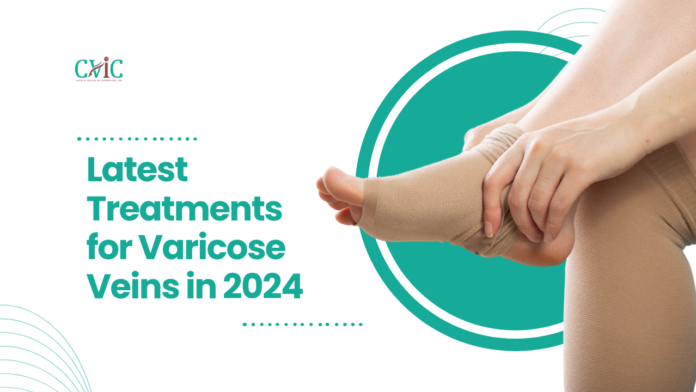Varicose veins are more than just a cosmetic issue; they can cause discomfort, aching, and sometimes more severe health problems. With advancements in medical technology, there are now multiple effective treatments available that are minimally invasive, quick, and provide long-lasting relief. This article covers the most recent and effective treatments for varicose veins, helping you understand your options to make an informed choice.
Understanding Varicose Veins and Why They Occur
Varicose veins are twisted, enlarged veins that appear just under the skin, often in the legs. These veins develop when the valves within the veins weaken, allowing blood to flow backward and pool. This buildup increases pressure, causing veins to stretch, twist, and bulge. People who stand or sit for long periods, women, and individuals with a family history of vein issues are more susceptible to varicose veins.
Symptoms That May Indicate Varicose Veins
Some common symptoms include:
- Aching or heavy legs
- Swelling, especially in the lower legs
- Burning or throbbing sensations
- Muscle cramps at night
- Visible dark blue or purple veins
- Dry or itchy skin near affected veins
Recognizing these symptoms early can help you take action before varicose veins worsen.
Also Read: Newest Treatment for Varicose Veins: Innovations in Vascular Health

Latest Treatments for Varicose Veins
With advancements in medical technology, modern varicose vein treatments are more effective and often involve less downtime than traditional surgery. Here’s a look at the most popular options:
1. Endovenous Laser Therapy (EVLT)
What is EVLT?
Endovenous Laser Therapy, commonly known as EVLT, is a minimally invasive procedure that uses laser energy to collapse and close off varicose veins.
How It Works:
This process causes the vein to shrink and seal shut, redirecting blood flow to healthier veins.
Advantages of EVLT:
- Quick procedure (30-60 minutes)
- Local anesthesia only
- Minimal scarring
- High success rates with low recurrence
EVLT has become one of the go-to treatments for varicose veins due to its effectiveness and convenience, allowing most patients to resume daily activities within 24 hours.
2. Radiofrequency Ablation (RFA)
What is RFA?
Radiofrequency Ablation, or RFA, is similar to EVLT but uses radiofrequency energy instead of laser to heat the vein and close it off.
How It Works:
During RFA, a thin catheter delivers radiofrequency energy to the vein walls, causing them to collapse and seal shut.
Advantages of RFA:
- Minimally invasive and performed under local anesthesia
- Quick recovery with minimal discomfort
- Effective for large, symptomatic veins
3. VenaSeal (Medical Glue)
What is VenaSeal?
VenaSeal is a revolutionary, FDA-approved treatment that uses medical-grade adhesive to close off varicose veins.
How It Works:
A small catheter injects a medical adhesive directly into the vein, causing it to seal and blood to redirect to nearby, healthier veins.
Also Read: What is the Most Effective Treatment for Varicose Veins?

Advantages of VenaSeal:
- No need for compression stockings after treatment
- Quick procedure with minimal discomfort
- Effective for both large and small veins
VenaSeal is one of the latest advancements in varicose vein treatment and offers a unique approach, especially for those seeking an option without post-treatment compression.
4. Sclerotherapy
What is Sclerotherapy?
Sclerotherapy is a non-surgical treatment where a solution is injected into varicose or spider veins, causing them to collapse and fade over time.
How It Works:
A chemical solution, known as a sclerosant, is injected into the vein, irritating the lining and causing it to close. Over time, the treated vein is absorbed by the body and disappears.
Advantages of Sclerotherapy:
- Quick and convenient (15-30 minutes)
- Effective for smaller varicose and spider veins
- Multiple sessions may be required for complete results
Sclerotherapy is an ideal option for patients who primarily have cosmetic concerns with their varicose veins, as it’s effective at targeting smaller veins.
5. Ambulatory Phlebectomy
What is Ambulatory Phlebectomy?
Ambulatory Phlebectomy is a minimally invasive surgical technique that removes varicose veins through small incisions in the skin.
How It Works:
Tiny punctures are made in the skin, through which the problematic veins are removed.
Advantages of Ambulatory Phlebectomy:
- Excellent for larger, more prominent veins
- Permanent removal of affected veins
- Quick procedure with minimal downtime
6. ClariVein (Mechanochemical Ablation)
What is ClariVein?
ClariVein is a novel treatment that combines mechanical and chemical processes to treat varicose veins, specifically targeting larger, symptomatic veins.
How It Works:
A rotating catheter is inserted into the vein, releasing a sclerosant solution that causes the vein to close.
Advantages of ClariVein:
- Minimally invasive with low risk of complications
- No thermal energy, so less pain during recovery
- Quick and effective
ClariVein is gaining popularity as it requires no anesthesia and is effective for patients who want minimal discomfort during treatment.
Also Read: What Are the Symptoms of Varicose Veins?
Choosing the Right Varicose Vein Treatment
When selecting a treatment for varicose veins, consider factors such as the size and severity of the veins, your personal comfort level, and your recovery timeline. Consulting with a qualified vein specialist will help you understand which treatment option best suits your unique situation.

Frequently Asked Questions
What is the best treatment for varicose veins?
The best treatment varies by individual and vein condition. Commonly, EVLT, RFA, and VenaSeal are highly effective for larger veins, while sclerotherapy works well for smaller veins.
How long is the recovery time for varicose vein treatments?
Recovery time ranges from a day (for most minimally invasive treatments) to a week, depending on the specific procedure.
Are varicose vein treatments covered by insurance?
Treatments are often covered if they’re deemed medically necessary.
How can I prevent varicose veins from recurring?
Maintaining a healthy weight, regular exercise, and avoiding prolonged sitting or standing can help prevent varicose veins from worsening or recurring.
Are there any risks associated with varicose vein treatments?
Most treatments are low-risk, with minor side effects like bruising or swelling. However, consult your doctor for a complete understanding of risks based on your health.
What is the success rate of varicose vein treatments?
Modern varicose vein treatments have high success rates, often above 90%, especially for procedures like EVLT, RFA, and VenaSeal.
Conclusion
Today’s options for treatin veins provide effective, minimally invasive ways to relieve symptoms and improve leg appearance. From laser therapies like EVLT to innovative treatments like VenaSeal, each method has its own set of benefits. Consulting with a vascular specialist can help you determine which option is right for you, ensuring you achieve lasting relief and comfort.




